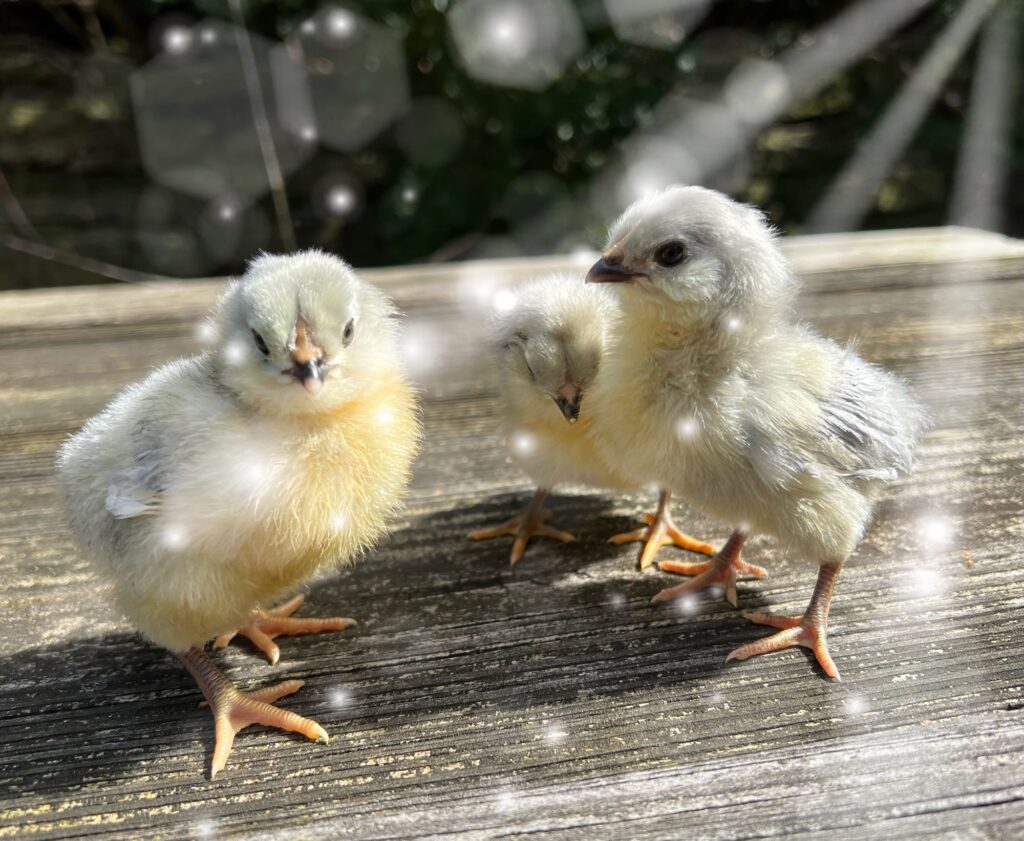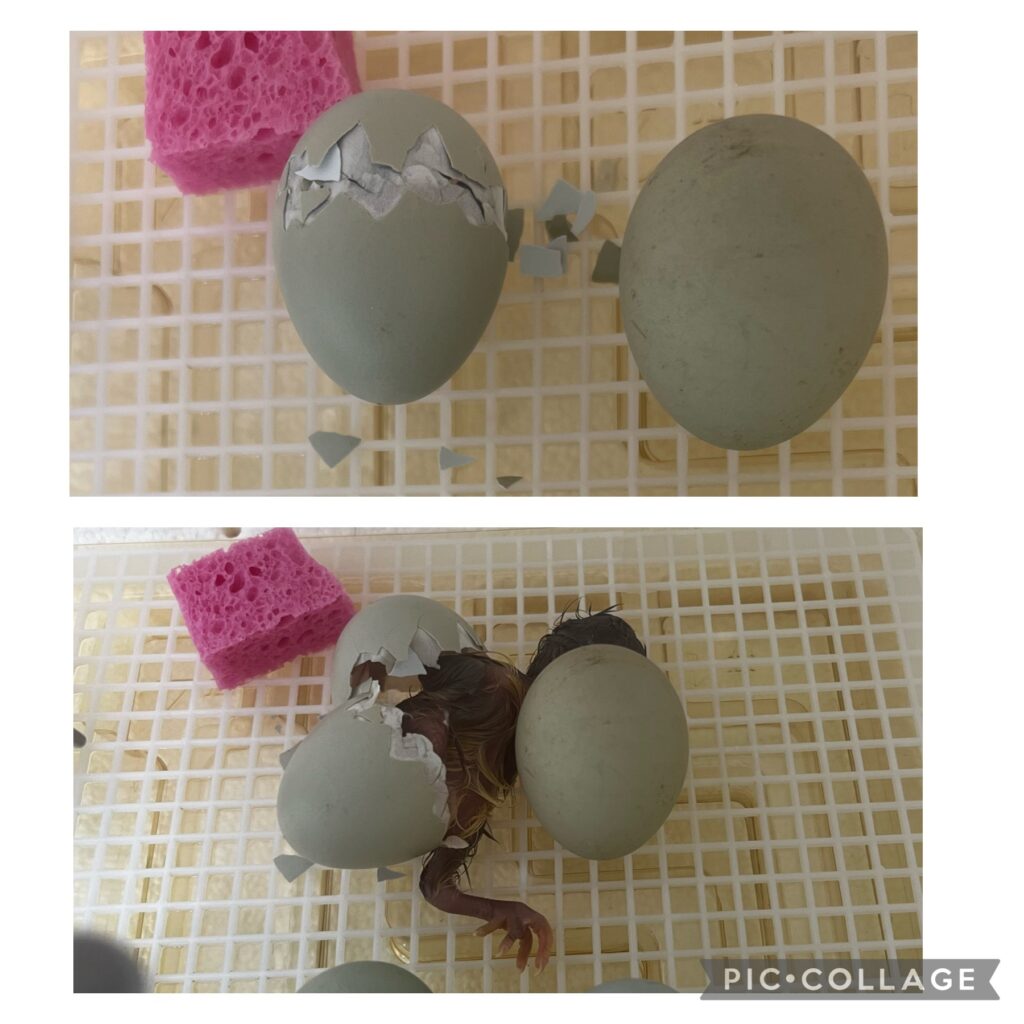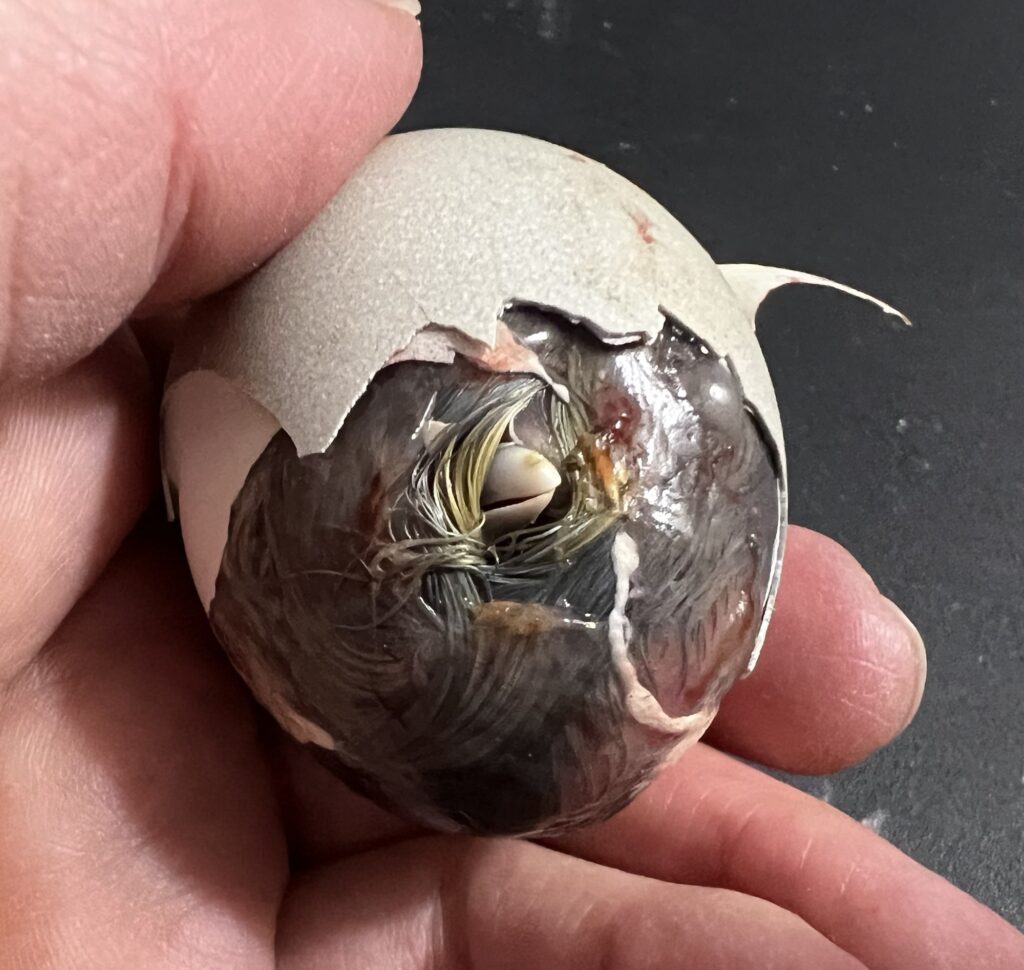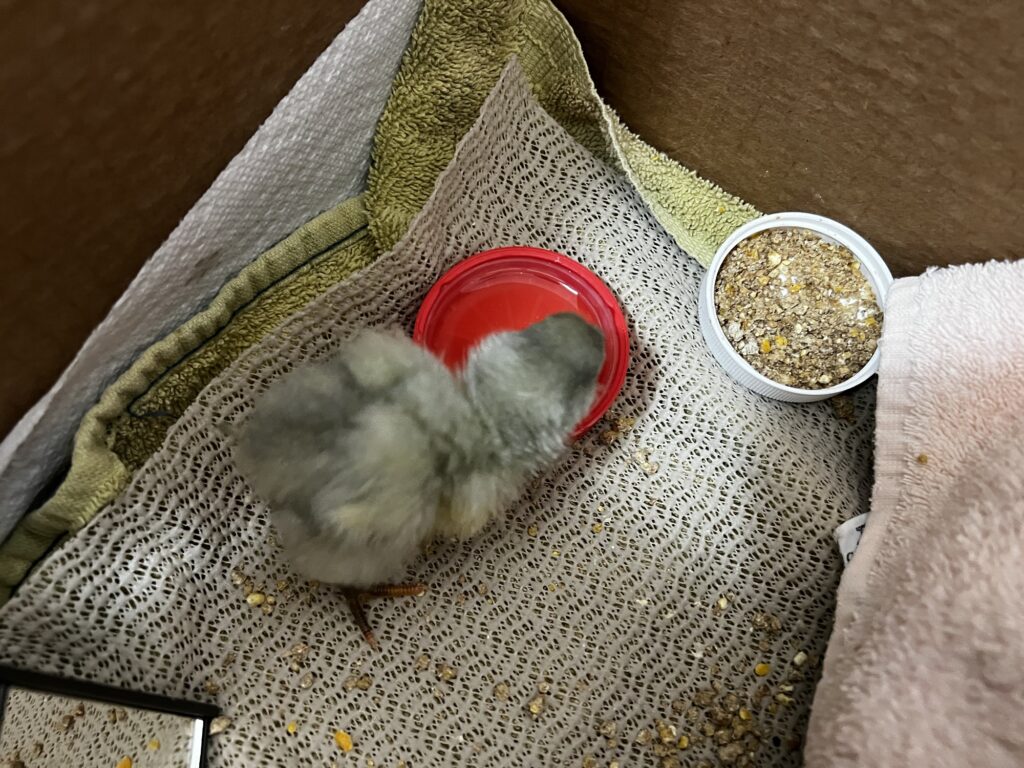
The hatch is over and there are fluffballs in the brooder. It’s been a few days, and the chicks are growing fast – some have even gone to new homes already. Let’s look back at how this hatch went and visit with one chick who needed a little extra help.
The first hatch was comprised primarily of pullet eggs. While fertility was great, the smaller shell size caused problems for some chicks in getting properly positioned to hatch. Some pipped at the bottom of the egg – risky because they miss the air cell. Others seemed to have been too large to turn properly and ended up dead in shell (DIS). One, in trying to get into hatching position, blocked the safety hole and expired. That’s part of the reality of incubation: some chicks get to the homestretch, but never cross the finish line.

And, while most of the cracked eggs actually made it to lockdown, the fact that I marked them at the top of the egg only meant that when the top of the eggs were opened for safety holes and gradually widened as I assisted some, I was no longer able to tell which eggs were the cracked ones. So, in short, I can’t be sure if they successfully hatched. (sigh) Lesson learned: also mark the bottoms of cracked eggs like these in the future.

Based on this experience, I also think I’ll skip the Liquid Bandage to repair cracks and try a less-pungent product – perhaps candle wax – next time. The Liquid Bandage, while easy to apply, has a very strong chemical smell that makes me question whether it’s a good idea to apply to hatching eggs, especially if it can penetrate the membrane (through the cracks) and possibly come into contact with the egg’s contents. The strong odor in the cramped incubator space also made me wonder if other developing chicks could have been affected by it.
One chick needed some extra help after hatching. She was the only chick that had wry neck, a condition that can often be (and, in this case, was) successfully treated with vitamin supplements. She sat in her cup in the incubator, and I gave her diluted Poultry Nutri-Drench by mouth on a cotton swab. Day by day, she gradually grew better. Because she was in the chick “ICU”, though, she wasn’t as strong as the other chicks who were already in the brooder, eating, drinking, and running around. After about 48 hours, a chick has used much of its yolk reserves and needs to begin eating or may eventually run out of fuel and die, so I wanted to get her into the brooder with the others as soon as possible so she could learn to eat and drink on her own.

Though she was a little wobbly, her wry neck had completely resolved, so I placed her under the “Mama Heating Pad” (MHP) in the brooder. I checked on her a little while later – she seemed fine, but I put her back under the MHP. A few hours passed, and I checked on her again…and she was stretched out in the corner of the brooder, away from the heat source, and she looked dead. Aghast, I picked her up and she felt cold. I moved her legs and she gasped. Still alive, but barely. I rushed to put her into a small incubator to warm up.
As she began to warm, I could see small movements. I wasn’t sure if the incubator was working to raise her body temperature quickly enough, so I resorted to the “emergency bra method” and put her in my shirt. I also put another layer on top to ensure it was toasty in there. Then I went back to studying.
After about 20 minutes, she began peeping. She stayed in my shirt for about an hour, sometimes moving around, sometimes sleeping. It was a bit distracting, but it was comforting to know she was improving. When she became very lively, I placed her back in ICU with some woolly socks to snuggle into.
That was a couple of days ago, and “Chilly” has made good progress, albeit in small steps. She has graduated from the ICU incubator (still on standby) to a cardboard box with her own “Mama Heating Pad” and a furry bear friend. She has been eating wet chick starter (at first, from my fingers but now out of a little cup) and drinking water on her own.

Though she spends much of her time under the MHP, she comes out when I call her (I whistle chick-type sounds and say her name) so I can feed her. Because she’s eating – enthusiastically – she’s growing stronger and is more active.

I don’t know what the future holds for Chilly, but I’ll keep feeding her until she can do it on her own and wiping her bum (it gets messy) until her digestive system sorts itself out. She’s alone in her little brooder, but she talks to herself and has a mirror “companion”. She’s a fighter, and as long as she has the strength to keep going, I’ll be here to help. And she definitely won’t be joining the other chicks until she’s much stronger. It’s been a rollercoaster ride so far, but I’m hoping it’s all good days for her going forward.
‘Tis the season…for hatching! More chicks and goslings to come in the next few weeks – and more on Chilly’s progress.
